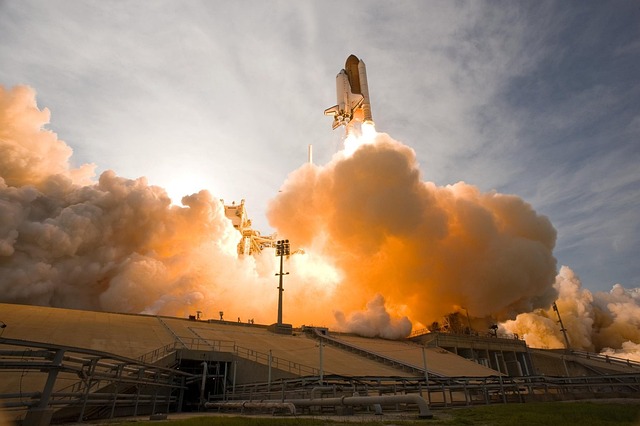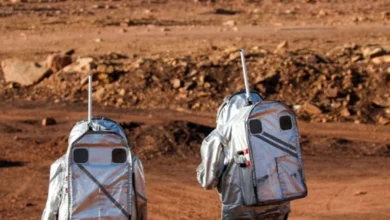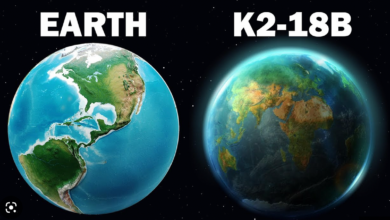NASA to retire the International Space Station by 2031, plans to crash it into Pacific Ocean
With the critical nature of the ISS deorbiting, NASA is building the dedicated US Deorbit Vehicle to lower it from orbit and ensure safe atmospheric re-entry.

The International Space Station (ISS) has been continuously inhabited since 2000, became fully operational in May 2009 and has hosted over 200 astronauts from multiple countries. However, NASA has announced plans to retire and deorbit the football field-sized ISS in a controlled fashion by 2031 after three decades of operations. The decision comes as NASA aims to transition to commercial space stations and focus efforts on deep space exploration missions, including establishing a lunar base.
Retirement and Deorbiting Timeline
NASA aims to retire the ISS by the end of 2030 and plans to deorbit it sometime in 2031. This will involve gradually lowering the station’s orbit through propulsion maneuvers until it enters the Earth’s atmosphere over a remote stretch of the South Pacific Ocean known Point Nemo – The Spacecraft Cemetery. As the ISS breaks up in the upper atmosphere, any remaining debris is expected to sink to the ocean floor.
Point Nemo – The Spacecraft Cemetery
The point in the ocean where the ISS will meet its end is called Point Nemo, located over 2,500 miles off the coast of New Zealand. Named after the submarine sailor in Jules Verne’s novel “Twenty Thousand Leagues Under the Sea,” Point Nemo is the farthest place from any human civilization on Earth. This makes it the perfect location for the ISS’s deorbiting, as potential risk or damage is minimized. More than 300 decommissioned spacecraft and satellites have already been laid to rest there since 1971.
US Deorbit Vehicle Development
NASA has initiated the development of a new spacecraft called the US Deorbit Vehicle (USDV) specifically for the purpose of safely deorbiting the International Space Station at the end of its operational life. The agency released a request for proposals from private industry partners to design and build the USDV. To maximize competition, NASA offered flexibility in the contracting approach – firms can propose either a Fixed Price or Cost Plus Incentive Fee model for the design and testing phase, while the remainder of the contract will be Fixed Price.
Per international agreements, the five partner space agencies operating the ISS are each responsible for managing the deorbiting of the hardware they provide. Previous plans relied on multiple Russian Progress spacecraft for the deorbit burn, but NASA now believes a dedicated new US spacecraft will offer more robust capabilities.
As a new development effort, the USDV will take several years to design, build, test and certify it is ready for its critical end-of-mission. The spacecraft must function flawlessly on its very first flight and have sufficient redundancies and anomaly resolution systems given there will be no opportunities to identify and fix issues.
The USDV will be either an entirely new spacecraft design or a modification of an existing vehicle. It will need to demonstrate capabilities to rendezvous and dock with the ISS, provide attitude control and point the station appropriately for the deorbit burn, and perform the firing sequence to lower the orbital altitude systematically for safe re-entry.
Once fully certified, the USDV will be pivotal in enabling the responsible deorbiting of humanity’s largest orbital structure ever built. The development and testing of this spacecraft represents one of the most complex technical challenges in the history of human spaceflight.
History and Significance of the ISS
The ISS represents an unprecedented feat of engineering and global cooperation in space. Built and operated by the space agencies of the U.S., Russia, Europe, Japan, and Canada, it took over a decade to construct at a cost of roughly $150 billion. Weighing over 900,000 pounds, the football field-sized structure has hosted a continuous human presence in orbit for over 20 years. Scientific research conducted aboard the ISS has led to Nobel Prize-winning discoveries and advanced our knowledge tremendously. Experiments by astronauts involving vegetable cultivation and plant growth have also advanced knowledge to enable lengthy deep space missions.

Transition to Commercial Space Stations
As the ISS is retired, NASA plans to purchase services from commercial space stations operated by private companies. This will allow NASA to focus on deep space exploration while still maintaining a human presence in Earth’s orbit through public-private partnerships. Cost savings from retiring the ISS will help fund NASA’s Moon-to-Mars initiative. This transition aims to ensure continued access to space for research, technology development, and international collaboration. These commercial platforms will serve as venues for collaboration and scientific research.
NASA believes that the private sector is technically and financially capable of developing and operating commercial low-Earth orbit destinations, with NASA’s assistance.
While the ISS is set to retire, other nations are developing their own space stations. China launched the core module of its space station in 2021, with plans to complete it in coming years. Russia also announced intentions to leave the ISS project and launch its own orbital station by 2030. India is currently in the early stages of studying the feasibility of developing an indigenous space station. The end of the ISS era will open new doors to space leadership and collaboration.
Please, also have a look into: Earth records the hottest summer ever in history in 2023: NASA



